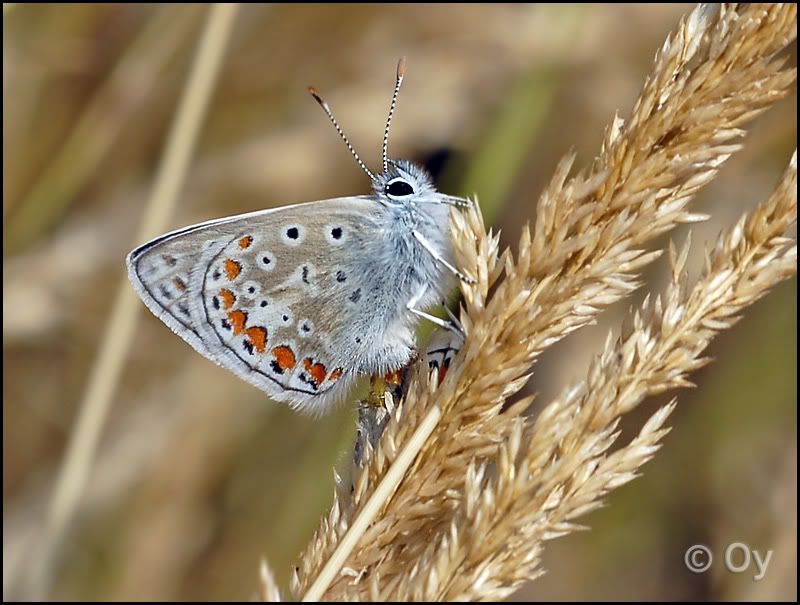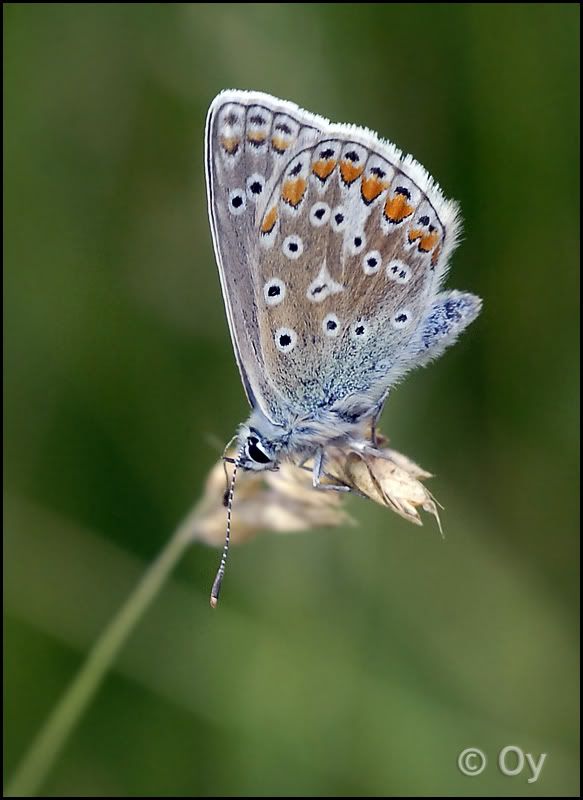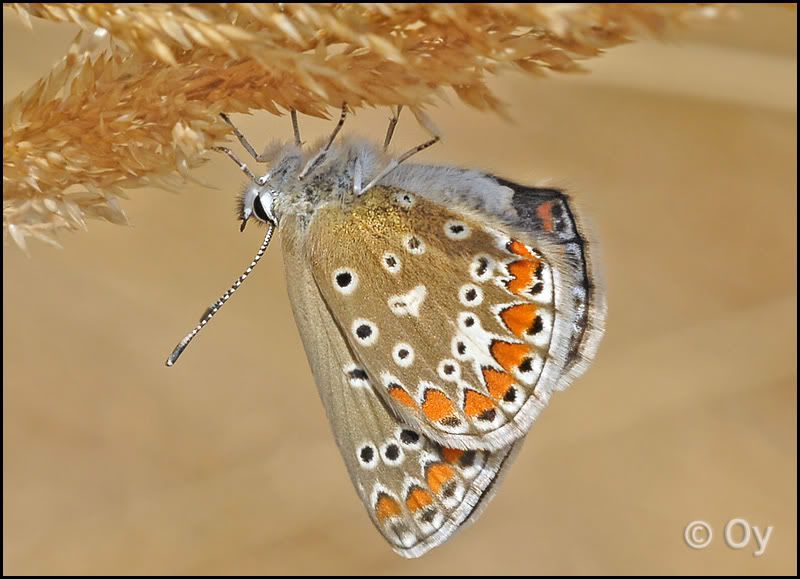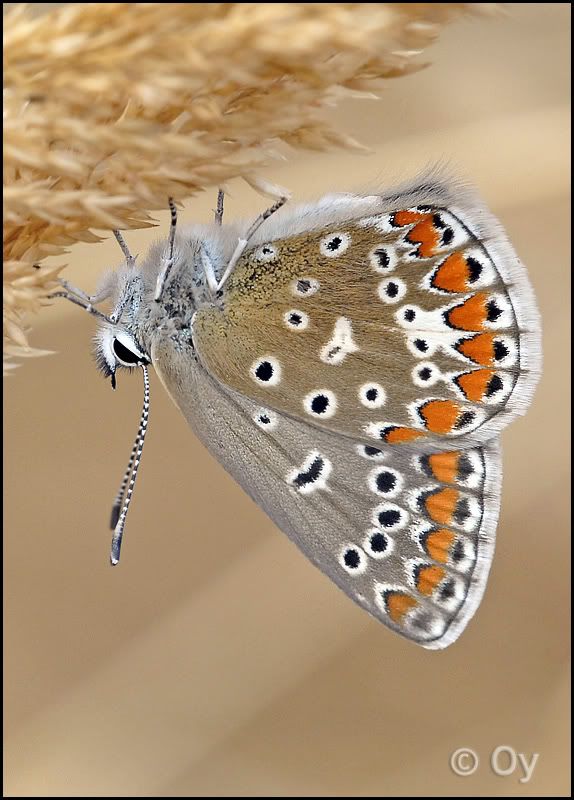Page 1 of 1
Common blue - first photos
Posted: Fri Jul 28, 2006 5:53 pm
by Oy
First time I've photographed these

I'm assuming this is the female? You can see the male attached - hiding behind the grass seedhead...

Another female?


I think this is a male?


Posted: Fri Jul 28, 2006 5:58 pm
by Pete Eeles
I think it might be the male. If you look at the other photos, a female has very little blue scaling on the underside.
But these are absolutely superb shots! What's your secret?

Seriously - I think other visitors would like to know your equipment and technique (tripod?).
You should submit these for inclusion on the main species pages on the UK Butterflies website

Cheers,
- Pete
Posted: Fri Jul 28, 2006 6:17 pm
by Oy
Pete Eeles wrote:I think it might be the male. If you look at the other photos, a female has very little blue scaling on the underside.
Hmmmm.... *Scratches head!
But these are absolutely superb shots! What's your secret?

Take LOTS and hope you get a good one?

Seriously - I think other visitors would like to know your equipment and technique (tripod?).
Nikon D200
Sigma 150mm EX DG Macro
Manfrotta 190ProB tripod with Joystick head
Take LOTS and hope you get a good one

You should submit these for inclusion on the main species pages on the UK Butterflies website

Cheers,
- Pete
As far as I'm concerened - if I post it here and you think it's good enough - feel free to grab it for the website

Posted: Fri Jul 28, 2006 6:34 pm
by Pete Eeles
Thanks Oy (Dave!). Will do. Do you have location info?
Cheers,
- Pete
Posted: Fri Jul 28, 2006 6:37 pm
by Oy
Yes - they were taken today at Three Sisters Recreation Area, Bryn, Near Wigan, Lancs.
Posted: Fri Jul 28, 2006 8:57 pm
by eccles
Yep, cracking shots.
I don't know whether Pete agrees with me but in my experience, female CBs have more pronounced orange roundels on the forewing undersides, and also tend to be generally browner on the undersides than males. When they get older and a bit shabby then it becomes difficult to tell the difference. Also, I don't know if this is a rule of thumb or not, but I've never seen a female on top in a mating pair.
Posted: Fri Jul 28, 2006 9:04 pm
by Pete Eeles
Not sure about the amount of orange, but certainly agree with the overall "ground" colour. Which is why I'd say the first 3 are a male, and the last 2 a female.
The last shot is just stunning.
And remember that there's a photo competition running

Cheers,
- Pete
Posted: Fri Jul 28, 2006 9:06 pm
by eccles
Coincidently, here's a pair I took today. Not *quite* to your standard but getting there maybe...

Posted: Fri Jul 28, 2006 9:08 pm
by Pete Eeles
Nice shot! And same comment applies regarding the competition - and there are no entries, so far, in the "behaviour" category

Also - something I'd not really noticed before until I watched about 20 pairs of mating Chalkhill Blue this morning. I figured that it is only in the "blues" that the male is larger than the female (and this doesn't even apply to haistreaks!). Anyone care to comment? And this photo backs it up! Am I going nuts?!
Cheers,
- Pete
Posted: Fri Jul 28, 2006 9:28 pm
by eccles
Yes I'd noticed that, with chalkhills too. It's quite pronounced. I thought a female chalkhill I saw at first was a common until three male chalkhills began to fuss over her!
Posted: Fri Jul 28, 2006 11:07 pm
by eccles
And further to that comment I noticed that when the competition was sorted and a single chalkhill male was left, he'd flutter around her for a while, then pause for breath as it were. As he paused he'd display open winged to the female, an ideal time to snap an open wing shot. You just get a second or two but it's enough if you're waiting.
Posted: Sun Jul 30, 2006 6:44 pm
by Wayne
Oy, those last 2 shots (females) are truly breathtaking.
Well done












